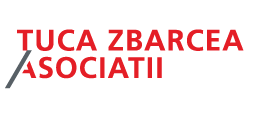Considering the current state of affairs in CEE, market dynamics have shifted in terms of where investors are looking for safe investment opportunities, with some sectors seeing steadier capital flows and others struggling. Our experts chart the current hotspots and consider whether the markets are set to shift again.
Energy: Booming
In Bulgaria, Romania, and Poland, energy is among the major sectors where capital is flowing steadily these days. Schoenherr Local Partner Ilko Stoyanov notes that energy has “been historically attracting a high demand for products and services” and that, with the war in Ukraine, energy is again on the rise. “This high demand does not look like it will change in the near future, which makes energy less susceptible to day-to-day market volatilities,” he says.
“Money is still out there in the markets, at least for now,” Tuca Zbarcea & Asociatii Managing Partner Florentin Tuca says. According to him, “there are investment funds and private equity firms on the lookout for opportunities in various sectors,” while “Romania is going through a prolific period as regards investments in the production of renewable energy.” Energy in general is on the up – including “nuclear, renewables, and gas – from exploration, to exploitation, and energy production.” Tuca adds that “Romania must continue the Black Sea gas extraction projects, to ensure independence from energy imports but, at the same time, new sources of energy production should be found.”
Penteris Head of Banking & Finance Katarzyna Sawa-Rybaczek also believes that the coming years will see a “growing energy sector” and that the Polish public sector will likely “maintain and even increase its spending levels in the near future, which in turn increases the number of transactions and investments in the energy sector.”
In Ukraine, however, those circumstances look different. “Ukraine is obviously at the epicenter of the war, affecting all businesses in the country,” Avellum Managing Partner Mykola Stetsenko notes. “Obviously, energy, steel production, agriculture, real estate, leisure, luxury goods, and high-end services were affected the most.” Still, he says that once the war is over, “energy – both electricity production and oil and gas extraction” – is one of those sectors “where there is potential for JVs between Ukrainian owners and Western investors.”
IT: The Perpetual Darling
Tuca explains that, in Romania, “money is still available in sectors such as IT&C.” According to him, “the IT market has always had impressive growth rates mostly because of the highly skilled workers available locally. After all, Romania has one of the highest per capita numbers of certified IT professionals, with the high quality of their services offered for reasonable prices.” Tuca also highlights that “big global technology corporations are also present locally in cities such as Bucharest, Cluj-Napoca, and Iasi. In addition, the IT sector seems to be among those least impacted by the crisis, and it will continue to be an important growth factor for the Romanian economy.”
Similarly, Stoyanov notes that “IT has been traditionally strong in Bulgaria,” however, “given the ever-rising hiring appetite of the industry, talent is now scarce.”
This, also, is rather different in Ukraine. “While most companies remain in Ukraine, others decided either to move or to expand to Eastern Europe,” Stetsenko points out. “Some IT companies and specialists also moved to Portugal, for tax reasons.” Still, he says “banking, retail, healthcare, and FMCG – as well as the IT sector – are among the more resilient ones today.”
Real Estate: Solid but Not Sustainable
Stoyanov and Sawa-Rybaczek highlight that, in Bulgaria and Poland, the real estate sector has been very stable so far. In Bulgaria, “real estate development is now at one of the highest levels in recent history,” Stoyanov notes. “Consumers have turned again to buying real estate, seeking safe harbor from the high inflation and the low or negative returns on bank deposits.” However, according to him, “the overall expectation is that this trend will soon reverse, considering that credit has become more expensive and bank deposits are turning a little more attractive.”
According to Sawa-Rybaczek, even though “ballooning inflation and high interest rates resulted in a slowdown on the housing sales market,” occupier demand has increased in the private rented sector. For 2022, “due to the high interest rates offered by banks, less affordable mortgages combined with growing prices resulted in the decreasing number of individual acquisitions of apartments.” At the same time, according to her, “more than one million refugees are estimated to currently be staying in Poland,” and all those factors together mean that “demand for rented apartments has increased – and rental prices have grown right along.” Still, “factors such as high construction costs – resulting from increasing energy and raw material prices and unsteady supply chains – and the growth of financing costs forced some investors to temporarily suspend new projects,” Sawa-Rybaczek notes.
Industry: Bet on Logistics and Military Production
Additionally, in Poland, “the industrial & logistics sector is still growing, and investor capital continues to flow into this sector in 2022,” Sawa-Rybaczek notes, adding that “throughout the whole of 2021 it was the main source of profit for investors in Poland.” According to her, “investors have allocated nearly EUR 3 billion into warehouses, logistic facilities, and industrial space, which is more than 50% of the total investment volume.” Sawa-Rybaczek adds that, “in 2022, in the logistics sector, demand stayed resilient but is down from peak levels, due to the limited availability of land for industrial purposes and the relatively long legal process to adapt other types of land for this type of investment.”
“One of the most important accelerators of the development of the Polish warehouse market are e-commerce services,” she continues, on account of pandemic and post-pandemic trends. Stetsenko similarly highlights the potential of the logistics sector in Ukraine to attract Western investors after the war, alongside infrastructure and, potentially, agriculture.
Meanwhile, he reports it was primarily military production that has been on the rise this year. “The war focused the Ukrainian economy in two directions: the basic needs of its people and the active support of the Ukrainian army,” Stetsenko notes. “From the sector-specific perspective, there is more activity in industries that relate to military equipment and anything else the army needs.” For example, he adds, “drone production is on the rise.”
The Kicker: NPL Market Dynamics
While the number of debt defaults might potentially increase, Tuca and Stetsenko predict some changes in the market dynamics. “I would expect bank loan defaults to surge in the upcoming year, largely due to the continued increase of interest rates – both in euros and, especially, in lei – doubled by staggering inflation, the rise of energy prices, as well as the uncertainties generated by the Russia-Ukraine war,” Tuca says. “At the same time, I think that, having the experience from the financial crisis of 2007-2008, for the most part, we will see assets and not necessarily businesses that will be put up for sale or be executed by the banks. Moreover, it is likely that the banks would rather opt to sell or divest NPLs as a package, instead of enforcing each and every single customer who is in payment default.”
Stetsenko believes that, “once the war ends, there will be a large debt restructuring wave in Ukraine, for sure.” However, he says, “banks will likely be flexible in restructurings because of the gravity of this force majeure situation in Ukraine,” and ventures that, “potentially, some real estate developments could be up for sale.”
Stoyanov, on the other hand, says that “the levels of NPLs have been traditionally low in Bulgaria, which to some extent is due to the conservative business lending practices of the banks.” Consequently, he says, “we do not expect that loan defaults would be so widespread as to create a market on their own.”
This article was originally published in Issue 9.11 of the CEE Legal Matters Magazine. If you would like to receive a hard copy of the magazine, you can subscribe here.


